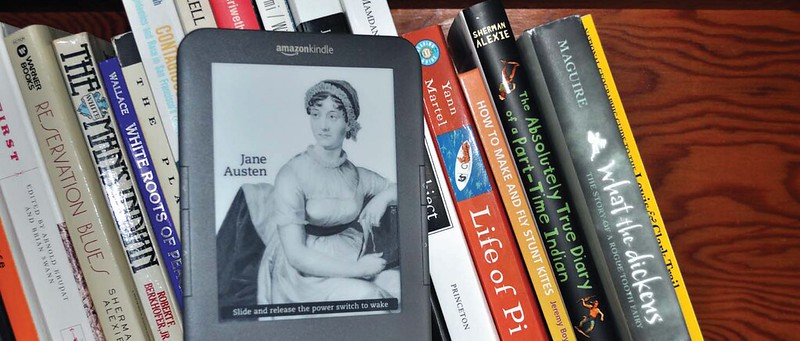
Developing technology has allowed easier access to resources for students around the globe. Computers and laptops with an internet access let students look up information from anywhere with internet access, and with the late 2000s boom of
eReaders, students have experienced more freedom than ever in accessing materials otherwise unavailable to them or inconvenient to access in print form. However, as convenient a tool as computers and eReaders seem to be for students, studies are showing that they may not be as helpful as they seem.
A 2012 study from the University of Stavanger found that students who read materials on a computer screen experienced significantly lower levels of reading comprehension compared to students who read materials in print.
Despite this information, however, the technological world is chugging on. Another study published in October 2013 found that 67 percent of US children between the ages of 2 and 13 are now reading eBooks.
First-year Molly Uher finds the results of the study completely unsurprising. “I feel lost with technology,” Uher says. “I have a really visual memory … In eighth grade I had this 200-page PDF of a book I wanted to read, and I just printed it out in the library.”
Uher says that reading on a digital platform is disorientating for her.
“In Germany, there’s this cathedral with like 500 spiraling steps, and it has no landings and no way to tell how far you’ve gone. It’s a horrible spiraling abyss. And that’s how I feel reading with technology is like.”
Despite the difficulties associated with reading digitally, the benefits still outweigh the negatives for many students who feel that the ease of access, portability and monetary savings of digital files make them more worthwhile than sticking to print.
“EReaders are way more convenient than regular books when I am looking for something specific or when I want something right away,” second-year Elisif Winters said. “They’re also much easier to travel with, which is important to me because I live out of state.”
Thesis student Anthony Serifsoy, like most students, gets his information through a combination of digital and print resources.
“Like 60 to 70 percent of my thesis information is digital,” Serifsoy said. “Print is physically easier to read on, but digital files are easier to manage and mark up.” If given the option, Serifsoy said, “I’d prefer print if it were accessible.”
Accessibility is key. For many students, reading digital material is the only means of realistically accessing essays or books they need for class, when the material is otherwise too expensive or difficult to get ahold of, such as when reading out of print books.
With the ever expanding marketplace for eReaders and other digital media, whether or not print media is better for comprehension seems irrelevant to those who are making a decision between the two, and in the academic world, digital media is already firmly entrenched. It is up to students and professors to decide what trade offs they are willing to make in their academic pursuits.
Information for this article was taken from Digitalbookworld.com
